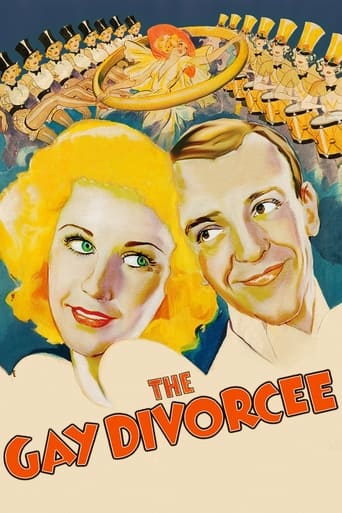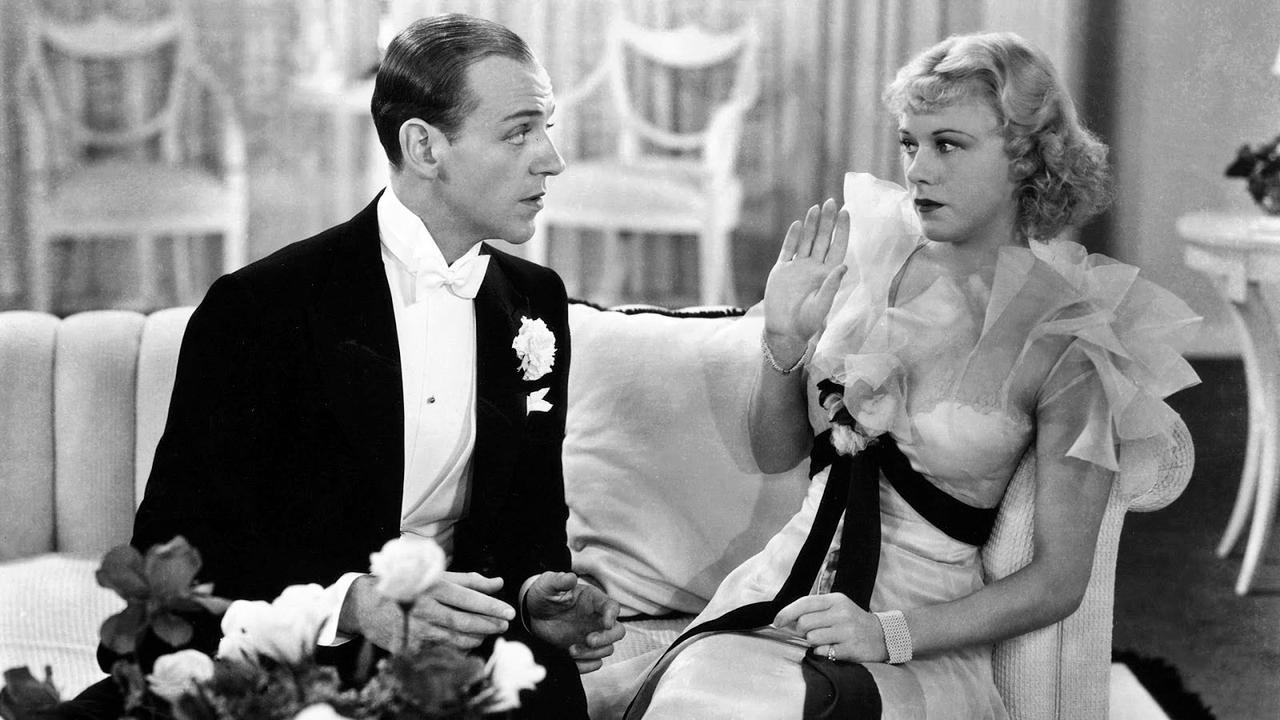StrictlyConfidential
You know - When it comes to these completely ridiculous and absolutely unfunny "Screwball" comedies of the 1930's - I sure wish that (for a change of pace) the 2 characters who were destined to become romantically involved would actually start out liking each other in the beginning.Yeah. And, then - They would steadily grow to detest each other as the story progressed - Instead of it always being the other way around. 'Cause I can't begin to tell you how totally nauseating this whole formulaic "boy-meets-girl" scenario gets. I mean - It's absolutely sickening.And, I can't believe that the "Depression Era" movie-goers back then were satisfied with Hollywood rubbish like this - 'Cause I think this movie was the worst form of escapism imaginable.Hollywood must've had a really low opinion of its audiences' intelligence to keep foisting crap like this on them, over, and over, and, over again...... Yawn-to-the-max!
mmallon4
I had a period in which I was infatuated with the greatness that is Fred Astaire & Ginger Rodgers. Prior to this I often heard of them but I was occupied with later film musical of the 50's. When I checked them out for myself I got it, oh boy did I get it. When together dancing or not, Fred and Ginger are in a world of their own and everyone else ceases to exist. Just look as Night & Day (my favourite Astaire and Rodger's number), what could be more spellbinding? The Gay Divorcée is my favourite Astaire & Rodgers picture. This was their first film together as lead and yet a feel it gets everything right and I consider it a much better film than Top Hat which itself I find overrated.I find the humour of The Gay Divorcée is more creative than that of Top Hat. Take the sequence in which Astaire finds Rodger in London by near impossible luck, then the two engage in a car chase into the country side (how often do you get a car chase in a 30's musical), and then in a wacky races type moment he goes ahead or Rodgers and gets road closed sign out of nowhere in order to stop her. Astaire's stalker attitude could come off as creepy but he is charming enough to get away with it, making this moments morbidly funny. This whole sequence is so surreal and plays like a live action cartoon, as if the filmmakers are making fun of the film's own highly improbably mistaken identity plot. This is much more clever than the handling of the mistaken identity plot in Top Hat. I don't mean to completely undo Top Hat, I think it's a good movie, just whatever Top Hat did I can't help but feel The Gay Divorcée did much better. I've always championed Astaire's unsung abilities as a comedian. His timing and line delivery is easily on par with the likes of Cary Grant; I wish he could have appeared in some non musical comedies. Ginger Rodgers usually had a female companion throughout the series and I think Alice Brady is the best of them all with her histrionics; the sound of her voice alone cracks me up. The Gay Divorcée may have slipped through the recently instated production code. If not then it certainty feels like a pre-code film, with sexual tension throughout and an air of scandalousness to the whole thing.Fred and Ginger, they where gods!
mark.waltz
There's a lot to love in this lavish musical comedy loosely based upon Cole Porter's 1932 show, the only movie in which Fred Astaire got to repeat his Broadway role. Only one song ("Night and Day") remains, and he has a new leading lady (Ginger Rogers replacing Claire Luce), so for their second pairing and first leads, Fred and Ginger entered film immortality. There's plenty of silliness to be had, a few lavish production numbers, and yet all results in a romantic film that has gone on to movie immortality.The basic storyline has American attorney Fred Astaire chasing the girl (Rogers), not realizing that his partner (Edward Everett Horton) is the attorney in her divorce case. She's at first annoyed by them (he catches her in a precarious predicament), and he actually stalks her for a bit, but once they break the ice (with "Night and Day"), she begins to warm up to him. But when she mistakingly believes that he's the hired correspondent paid to help her get the divorce, more confusion ensues until the correct one (the hysterical Erik Rhodes) shows up with his concertina.Alice Brady has some of the funniest dumb lines in movie history, her malapropisms filled with innuendo. Droll Eric Blore adds more amusement as the hotel waiter with Betty Grable coming on for a delightful song and dance number ("Let's K-Nock K-Nees") with Horton. It's clear that there's a future star in this delightful peppy youngster, yet it took 6 years before she would find success in lavish color musicals over at 20th Century Fox.As for "The Continental", it is set up nicely, although I laughed more at the fact that Astaire had a pair of paper scissors on him and could take a page out of a magazine and make it stand up on a record player to provide a shadow for him and Rogers while they went out and danced without Rhodes' knowledge. The production number goes on forever, but is so delightful that it really doesn't matter, seeming more like a music video with its brunette dancers in black dresses and blonde dancers in white dresses.
Steffi_P
The movie musical had been a Hollywood staple since the dawn of the talkies, but after a few years the novelty of the all-singing picture was wearing off and the studios had to refresh the genre with new tricks and, most crucially, popular stars. Old hand Al Jolson had reinvented his image, Bing Crosby was a fresh-faced newcomer, but most successful of all was the duo of Fred Astaire and Ginger Rogers. This was their second appearance together, and the first where they were the lead players and main attraction.The two of them were rather different in background. Astaire had already been an established star on the stage and having worked with Ziegfeld was very much in touch with that passing generation of theatrical extravaganza, but he was a newcomer to cinema. Rogers on the other hand already had two-dozen movie credits to her name, and had gained a reputation in small roles, often as a catty, antagonistic chorine. But despite their differences they have in common an approach to dancing that, despite professional precision, brings out a lot of personality. And both can act. Ginger would later prove herself to be an excellent dramatic actress, and is steady enough here. Fred just has an easygoing charm that seems as effortless as his dancing. In a non-musical, these two would seem an odd pairing – it's when they dance we see them click. But these were early days yet, and in The Gay Divorcée they lack that sense of familiarity around each other that would make their later romances seem so right.This was also the first time Astaire and Rogers were put before director Mark Sandrich, the man who helmed their most successful features together. Sandrich keeps a sort of gentle rhythm going throughout the picture with some delicate camera moves, such as the opening sweep through the restaurant onto Astaire's dancing fingers. His approach to the musical numbers was always oblique yet effective. For "Needle in a Haystack", the song is born out of a dialogue scene, with the camera still in its place, the sofa in the foreground separating us from Astaire, who (very unusually) is framed in profile. After one verse, the angle changes to place us in front of him. The camera then follows him as he gets up and selects a tie from a valet, and the dance just segues out of that movement. Sandrich's ability to make the songs flow seamlessly in and out of the non-music scenes was a key part in the ongoing revolution in how musicals were made.One thing that makes a musical like The Gay Divorcée seem somewhat archaic is its plot. It's a comedy of errors that might have been quite good had it been fully developed as one, but the way the narrative twists to fit a song it becomes obviously artificial. It also suffers from an unpleasant quality of many romances of the era, in that the "romance" basically consists of the man stalking and harassing the woman until, against all probability, she falls for him (and not even the suave Mister Astaire can stop this from appearing creepy). The only thing that saves this from being a handful of noteworthy song-and-dance routines strung together with a limp story is the often witty dialogue and the way it is delivered by a wonderful supporting cast. Just as Fred and Ginger established their screen persona, so too did Edward Everett Horton become the fussy, mother-hen sidekick, Eric Blore the chirpy, intrusive butler and Erik Rhodes the bungling would-be Latin lover. These three are all excellent and, with the romantic interplay between Astaire and Rogers not quite as fizzing as it should be, dare I say they even overshadow the two leads? (Yes, I do dare say).



 AD
AD



